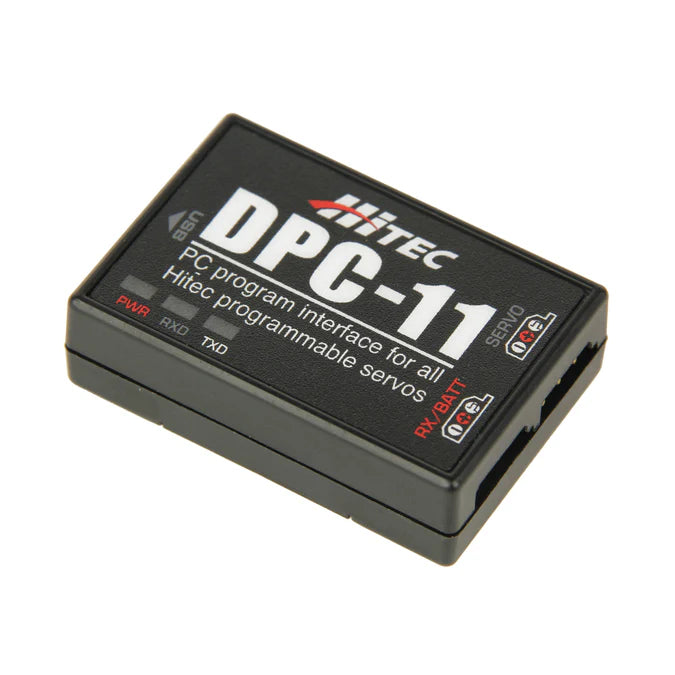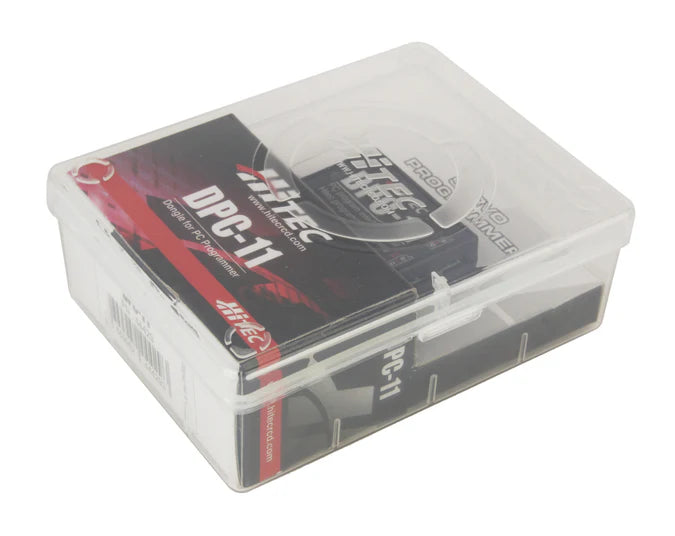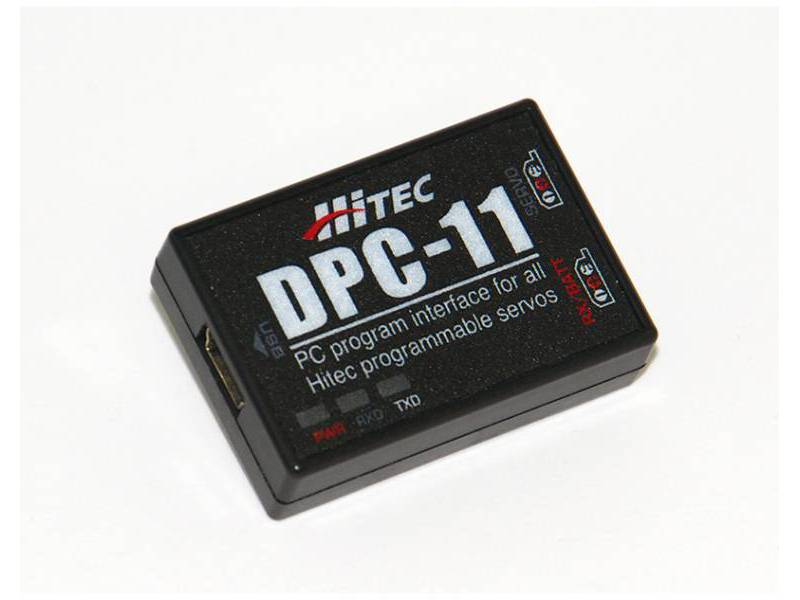Description
Programming List
The following functions can be programmed into HiTEC BLDC servos using the DPC-11:
- Setting the middle and end points (180 function) to define the range of motion.
- Setting the direction of rotation (clockwise/counter clockwise) to determine the operational direction.
- Setting the dead zone (electronic "play") to adjust sensitivity around the neutral position.
- Adjusting the speed to make the servo slower if necessary, providing control over movement speed.
- Adjusting the soft start, ensuring the servo gradually moves to its neutral position upon activation for smoother operation.
- Setting the fail-safe function to specify the servo's behaviour in case of signal loss or interruption.
- Setting the overload protection to prevent damage by making the servo "soft" if overloaded, which can prevent it from burning out in extreme cases.
- Save or load settings for easy management and replication of configurations.
- Factory reset to return the servo to its original settings.
- Programming the FAIL SAFE, either On or Off, for added safety.
- Specifying the FAIL SAFE Position to define where the servo should move in case of a fail-safe event.
- Adjusting the Dead Band Width to fine-tune the servo's response to input signals.
- Utilizing the "Save and Open Parameter File feature for custom settings management.
- Loading the Factory Default Parameter File to restore original configurations.
Testing List
For testing HiTEC BLDC servos, the following functions are available:
- Servo Travel, which can be tested using one of these methods:
- Manual Positioning for direct control over the servo's position.
- Automatic Sweep Positioning for continuous movement across the servo's range.
- Step Positioning for incremental movement to test precision and responsiveness.
- Testing the FAIL SAFE programming position to ensure the servo correctly moves to the predefined position in case of signal loss.



